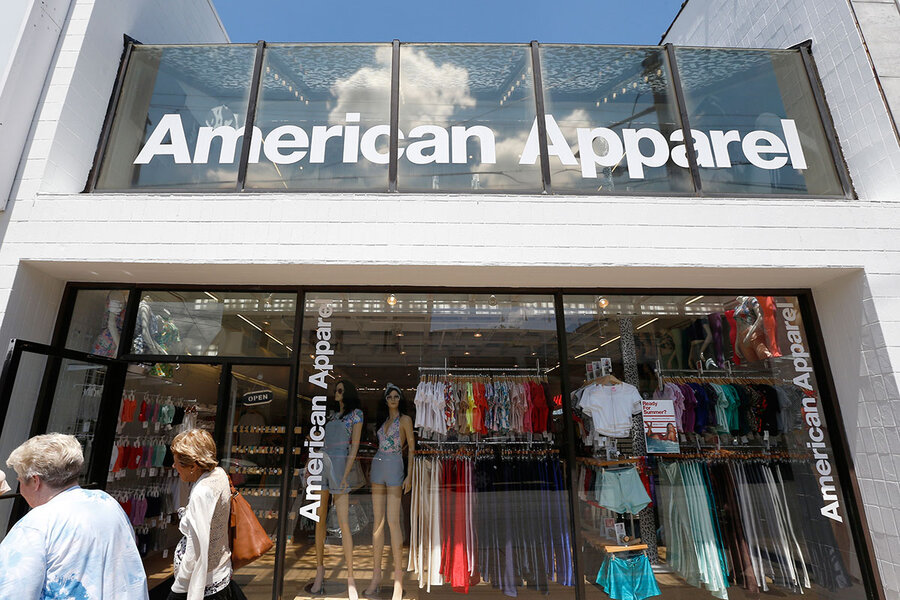After auction, is American Apparel still 'American'?
Loading...
American Apparel, once a leader in “socially conscious fashion,” now faces an uncertain future.
The Los Angeles-based clothing brand and some of its manufacturing equipment were sold to Canadian company Gildan Activewear Tuesday in a court-supervised auction for $88 million in cash, after the brand filed for second bankruptcy within a year in November, Reuters reports.
“The American Apparel brand will be a strong complementary addition to our growing brand portfolio,” Glenn Chamandy, president and chief executive of Gildan, said of the acquisition in a statement. “We see strong potential to grow American Apparel sales by leveraging our extensive printwear distribution networks in North America and internationally to drive further market share penetration in the fashion basics segment of these markets.”
However, the deal – which still awaits approval from a Delaware bankruptcy court judge on Thursday – does not include any of the company’s 110 retail stores.
With the change of ownership, analysts said the company, which was once the largest producer of US-made garments, might foray into other business models, such as wholesale.
“American Apparel is headed to the discount bin,” Lloyd Greif, chief executive of Los Angeles investment banking firm Greif & Co., told The Los Angeles Times. “What was once considered to be an upscale brand doesn’t have that cachet anymore.”
Gildan initially offered $66 million for an asset purchase agreement, then soon increased its bid to obtain the fashion brand’s intellectual property rights as well. The company filed for Chapter 11 bankruptcy protection on November 14 with the intention of selling the company, according to a statement.
The Canadian manufacturer faced challenges from Next Level Apparel during the auction process, Reuters reports.
Other companies, including Amazon and Forever 21, were also vying for the brand before the auction this week, but ultimately did not submit bids.
In its early days, American Apparel, famous for its “designed, cut and sewn in Los Angeles” motto, was one of the symbols of the “sweatshop-free” movement, which the brand helped bring to national attention in the early 2000s.
But as time went on, the company found itself facing challenges from other competing fast-fashion retailers who took the market over with cheap, trendy apparel manufactured overseas, as the Monitor reported last year. American Apparel was also no stranger to turmoil and crises. The troubled retailer made headlines last year for ousting founder and chief executive Dov Charney, and for its controversial sexualized advertising. The company filed for its first bankruptcy in 2015.
Amid the uncertainty of the auction, American Apparel last month notified 3,500 of its workers of possible layoffs and said it would close nine stores by the end of December.
And will American Apparel's goods still be "made in America"? It remains to be seen, but any decision could impact the company's image. "I hope that they keep a lot of manufacturing here, particularly for their brand," retail analyst Mary Epner told Reuters.
This report contains material from Reuters.








